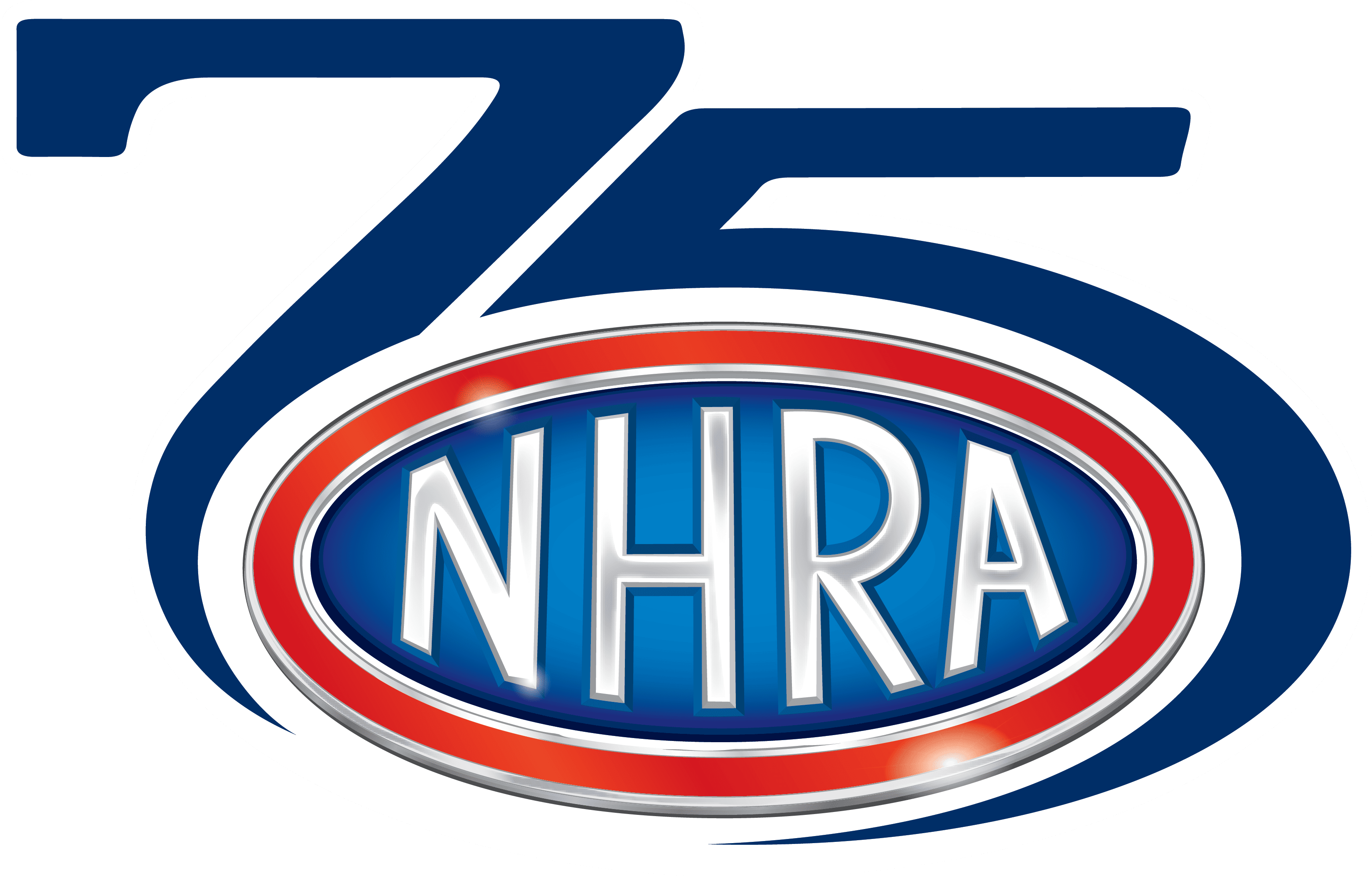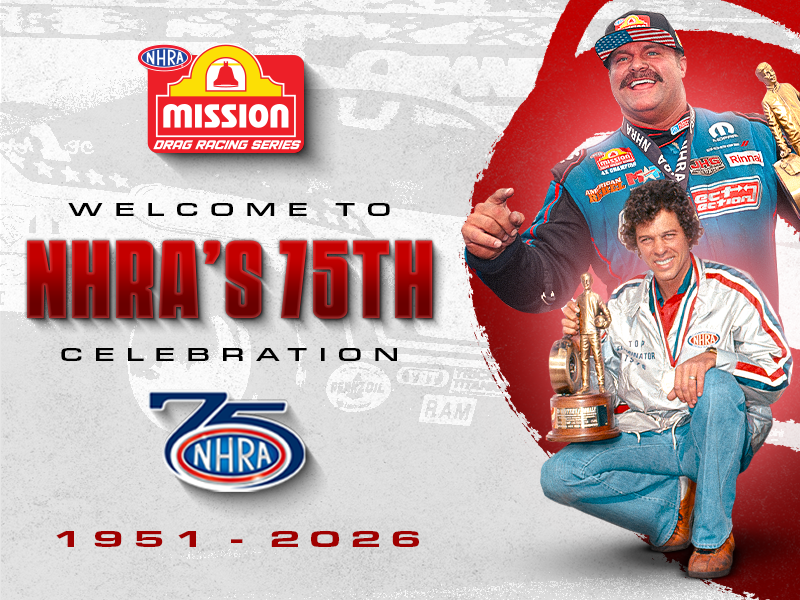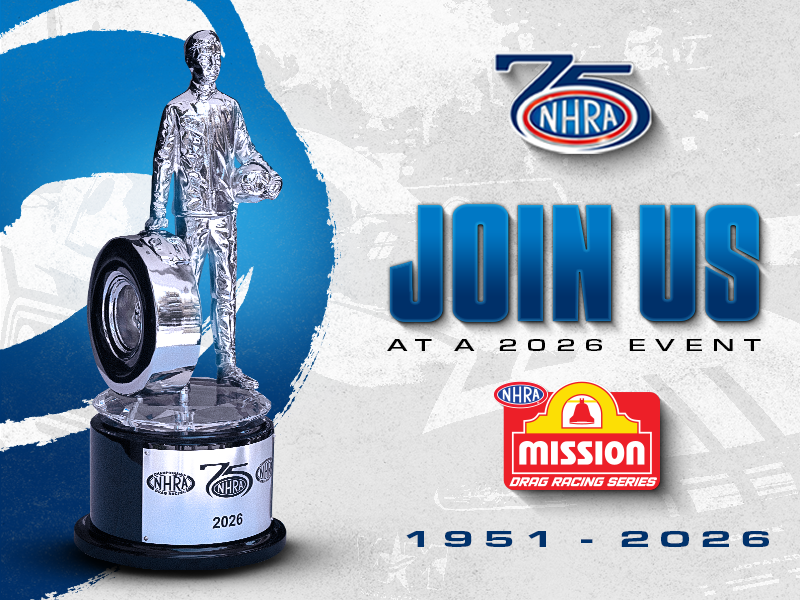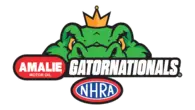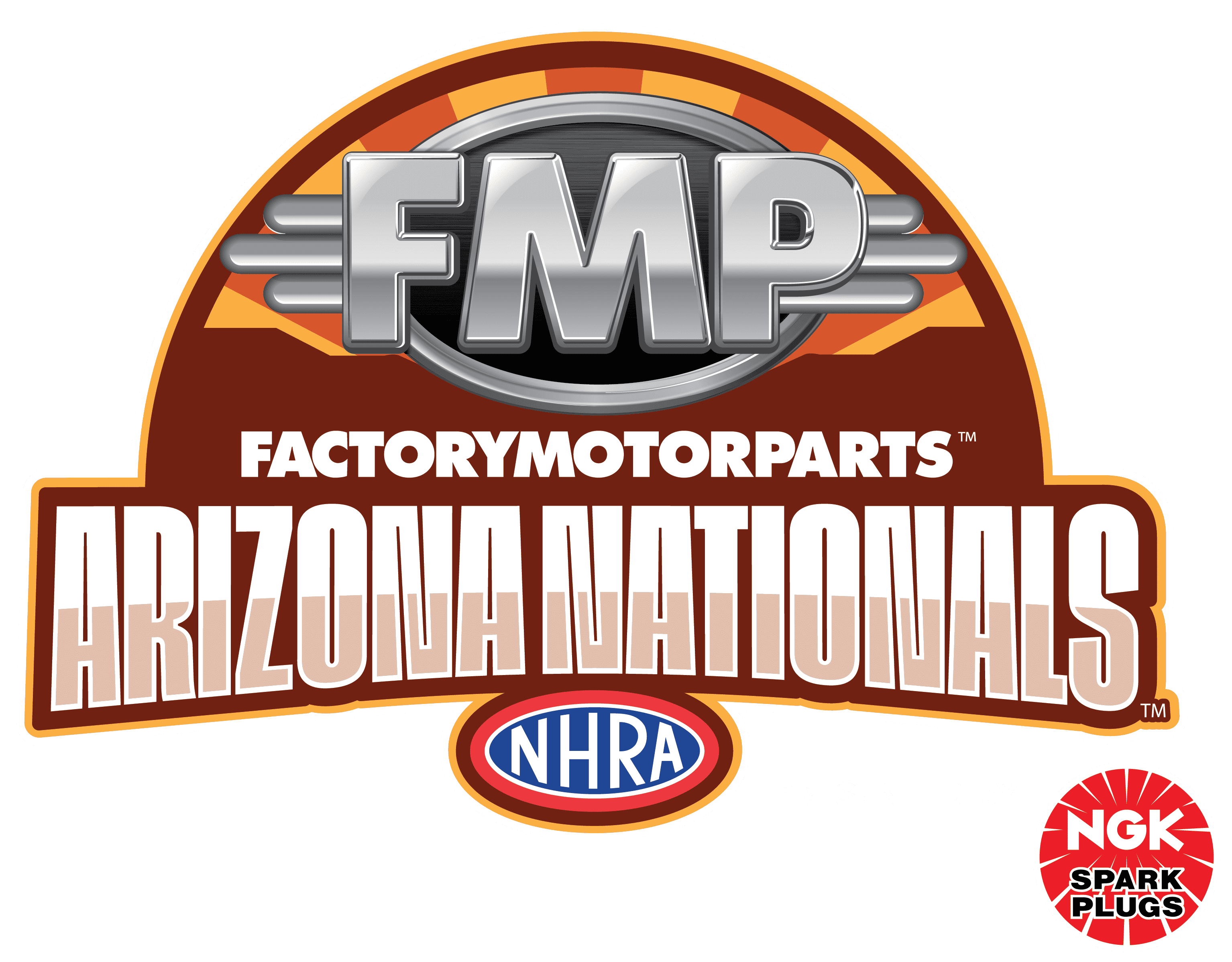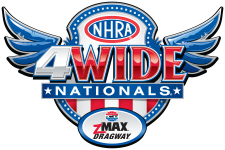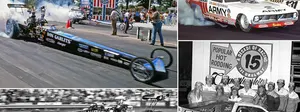The Misc. Files: Welcome to the 'A' list
Even in this digital age, my desk is covered with scraps of paper and Post-it notes filled with chicken scratch that sometimes I can't decipher a few hours later. There are random phone numbers without any name next to them, e-mail addresses to god-knows-who, and words that I don't even think are part of the English language.
I'm usually a bit better organized, and as I started to wade into the ongoing project you've come to know and love called the Misc. Files, I decided that rather than jumping all willy-nilly about the alphabet like I did to begin (from B to I), I'm going to spare myself the agony of trying to remember if I've done Q or L without scrolling back through the Insider Archives and do what I should have done in the beginning … start at the beginning, which, in our alphabet, means the letter A (a big sorry to the Ken Zeal Fan Club; you’re going to have to wait a while).
So, without further ado and with credit when listed, here's the stuff from our own "A" list of obscurity.
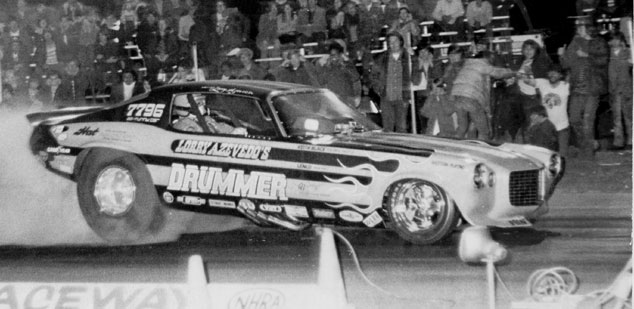 |
Some people went, "Huh? Who?" when I showed the late-1980s pic from the "I" Files of Lorry Azevedo driving Ray and Shirley Strasser's Insanity Corvette Funny Car (Roger Lee informs me that I need to add drag boat racer Tom Black and Craig Epperly to the list of former Strasser drivers), but Azevedo had been around since the early 1970s, when he piloted this Woody Gilmore-chassised Drummer Camaro Alcohol Funny Car, initially owned by John Kinsel, who was a professional drummer, hence the name. Azevedo had full ownership of the car in 1975, when this photo was taken April 19 by Ron Burch at Sacramento Raceway. Azevedo also briefly drove the A&E Motors Corvette nitro flopper of Mike "the World's Fastest Hippie" Mitchell in 1980, according to DragList.com.
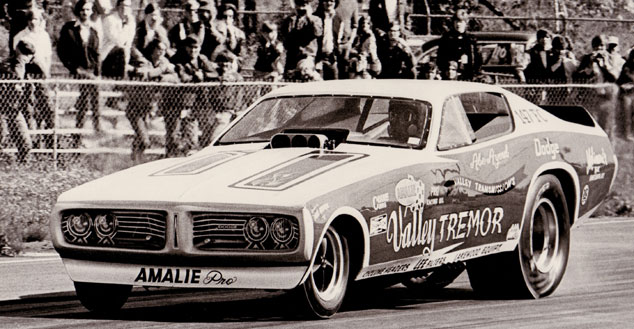 |
From the even-more-obscure files comes this ride, the Valley Tremor Dodge Charger, owned and driven by Abe Ayoub. I'd only seen one other picture of the car, from an Amalie Oil handout that had the car parked in snow, but here it is in action. The car, built on the first of the narrow Logghe chassis, was previously campaigned by Phil Castronovo, who won the world championship with the car by scoring at the 1971 World Finals in Amarillo. Ayoub, who ran the car for just one season, in 1972, was from the same Utica, N.Y., hometown as the Custom Body gang.
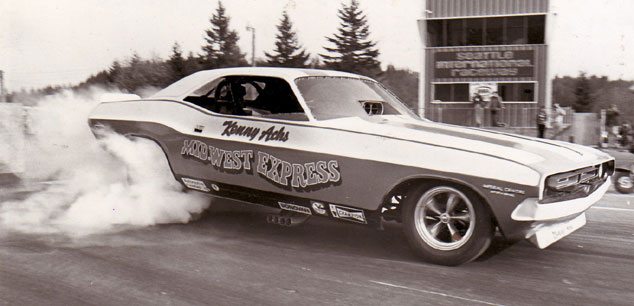 |
While we're doling out 1970s Funny Cars like Easter candy, here's a neat low-angle shot of Canadian Hall of Famer Kenny Achs' Mid-West Express at Seattle Int'l Raceway in May 1971. Achs actually began his career in Top Fuel in the late 1960s – he owned and operated the first Top Fuel dragster to run out of Saskatchewan -- before buying the Woody Gilmore-chassised White Bear Dodge Challenger from Tom Hoover and renaming it, like his dragster, after his automotive shop (Saskatoon being roughly in the midwest of Canada, eh?), but, according to Danny White, he later renamed it Black Sheep Squadron after obtaining backing from the Alberta-based Black Sheep Boutique. The car was a bit on the heavy side and ran a best of 7.06 at 221 mph when the better cars were running 6.80s. Achs eventually sold the car to concentrate on his business and in 2003 was inducted, along with Barry Paton, into the Canadian Motorsports Hall of Fame. Achs later found and restored his original 1967 Top Fueler and donated it to the hall in 2002.
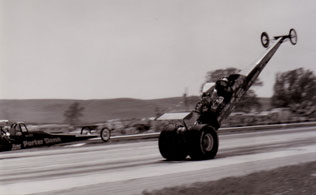 |
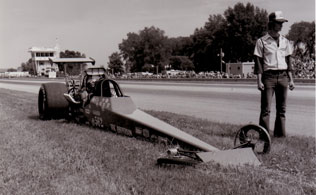 |
Minnesota's Vic Anderson aired out his alky digger at Thunder Valley Raceway in Marion, S.D., in this mid-1980s photo by lensman Richard Wood, who really nailed the shot (wood … nailed it ... get it?) when Anderson hammered the throttle (please, stop him) and drove (seriously, Phil?) into this wheelstand, the front tires clawing (someone get a net) at the sky. The landing was anything but soft, and the front end flat as a board.
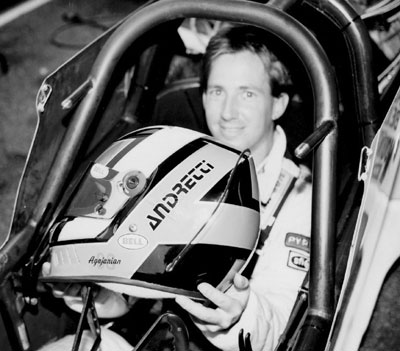 |
The lettering on the helmet at right reads "Andretti," and the face may be familiar as that of versatile wheelman John Andretti, the nephew of legendary Mario, who tried his hand at drag racing in 1993 behind the wheel of former baseball slugger Jack Clark's Taco Bell-sponsored dragster. In what was the fast-food chain's first foray on the strip, Andretti impressed everyone – including the Taco Bell execs on hand --- in his debut at the 1993 Atlanta race by not only qualifying but reaching the semifinals with the Tim Ferrell-tuned machine. Andretti qualified No. 12 with a 4.99, then beat no less an opponent than multi-time world champ Joe Amato in round one with a 5.00 and Tommy Johnson Jr. with a 4.92. "When I got here, I was just concerned about qualifying," he admitted. "I didn't want to come out here and have the media think I was a wanker. I wanted to do a good job. If we had any doubters, maybe we're making believers out of them now." Andretti's run ended in the semifinals against Clark's previous driver Mike Dunn, 4.92 to 4.95, but he definitely left a solid impression.
And what of uncle Mario? Well, the closest he got to Top Fuel was aboard Mickey Thompson's dragster-themed go-kart (below). I have to wonder about that front-end ballast, though …
 |
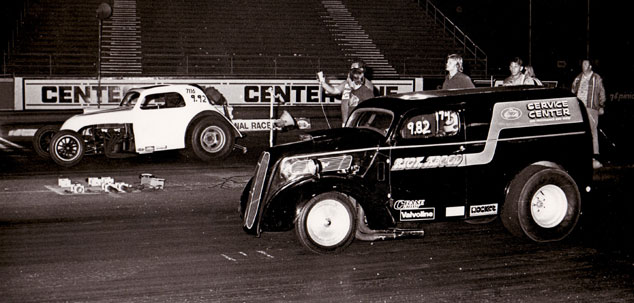 |
If you went to Orange County Int'l Raceway in the late 1970s and early 1980s, chances are you saw a lot of the guy in the near lane. Rick Abood was one of the bracket stars of the track and later one of the earliest Pro Gas campaigners with his familiar Thames panel wagon. Abood ruled Bracket 1 at OCIR. Here, he's pictured beating Clyde Miller's Fiat in the final in this undated, uncredited photo.
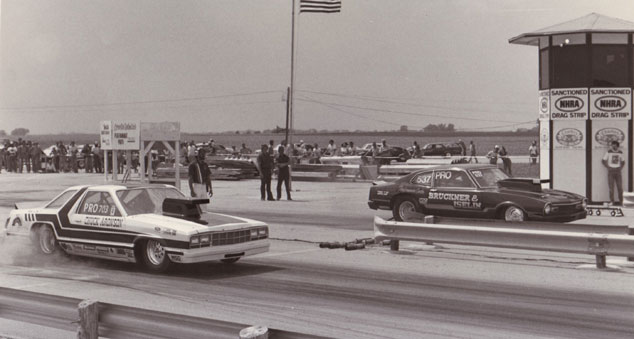 |
Where do famous old race cars go when they retire? Apparently to Scribner, Neb. Chuck Aronson, the pride of Chillicothe, Mo., bought one of Bob Glidden's all-conquering Ford Fairmont Pro Stockers and campaigned it in the Mid-America Pro Stock Association battles. In this June 1982 all-Ford final-round photo by Rocky Finlayson, Aronson is taking on local favorite Dan Bruckner of Omaha. According to the very long caption on the back (thanks, Rocky!), Bruckner got a major holeshot on Aronson, but his Maverick blew a head gasket near the lights, allowing Aronson to sneak by for an 8.14 to 8.43 victory.
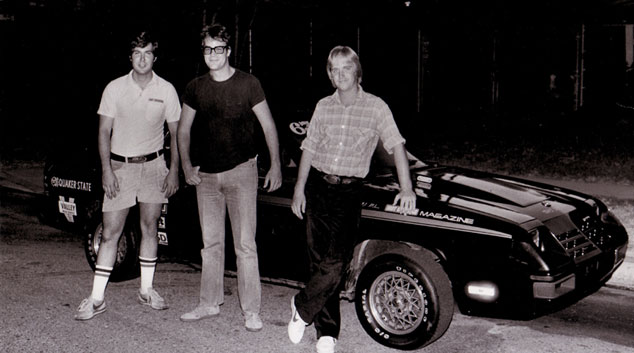 |
And finally, this one has a personal connection to me. You might recognize the good-looking guy in the center as actor Dan Aykroyd, of Saturday Night Live, Blues Brothers, and Coneheads fame. The guy on the left is former National DRAGSTER staffer Cam Benty, who went on (despite his stylish choice of apparel) to become the editor of Popular Hot Rodding magazine, and on the right is the late Pete Pesterre, a talented writer and photographer who was tragically killed in a motorcycle accident at El Mirage on Christmas Day in 1993. I knew all three of these guys through my best buddy, C. Van Tune, who also worked at PHR and took this photo. The boys had met Aykroyd when he purchased from Cam and Van an old police car that the duo had bought and fixed up to take part in the Four Ball Rally, one of the old Cannonball Run-type coast-to-coast speed runs from Boston to San Diego. "Cam saw Aykroyd somewhere about 10 years ago, and he not only remembered us, he still had the cop car," Van wrote me recently.
Interestingly, the Dodge Charger in front of which the trio is standing was a magazine project car that the PHR staffers not only entered in the 1982 Winternationals but which Benty also qualified No. 1 in the Stock field with a 16.54 pass that was 1.04 seconds under the soft Y/Stock index. That blast (much to their never-ending delight) was more than a quarter-second quicker than Hot Rod magazine's Jeff Smith, who fielded a nearly identical Plymouth Turismo in the same class. Benty lost in round one and Smith in round two.

Follow-up I: Heard from Ted Guth, whose White Trash nostalgia Funny Car I showcased here last week. I asked about the, well, unusual nature of the junkyard refugee paint scheme, with its mismatched doors and fenders, and he responded, "Due to my dislike of some individuals' interpretation of the word 'nostalgia' (i.e., '70s Firebirds that look like spaceships and Dodge Challengers with 40-inch extended noses, etc.), I decided that my car would more closely resemble a street car. The 'aged' patina and other little features like hood pins, door handles, and side marker lights just add an exclamation point to my desire to make the car look 'street.' "
And how successful was his effort?
"At a recent car show, a guy came up to me and asked if I would be interested in buying body parts for my car," Guth added. "He explained that he knew of a guy who had a pair of Dodge Demon doors that would fit a Duster, too. He was totally serious. I told him to walk up and take a close look at the car. He looked close at the car, laughed, and said, 'This isn't a real car; it is just a fiberglass replica of a Duster!' "
Ted sent along a couple of closer photos that allow you to see what he means; check out the faux rust along the bottom of the body and passenger door. Too cool!
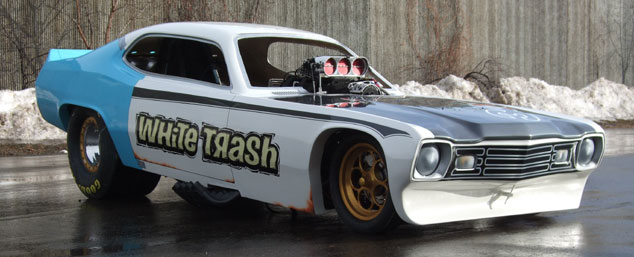 |
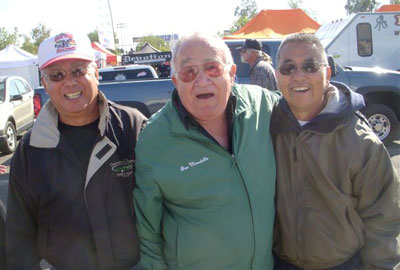 |
Follow-up II: I also heard from former A/Fuel hero Jimmy Ige, who was mentioned and pictured in the "I" Files column. He's still alive and kicking all these years later, still living in my old Culver City stomping grounds (just down the street from Roland Leong). He sent along this recent photo of himself, left, longtime partner and friend (more than 60 years!) Michael Sassa, and Joe Mondello taken at a past Hot Rod Reunion. I asked him about the group photo from Bakersfield, which was chock-full of kids (scroll down to see it). That's not Sassa at far left but late crewmember Don Fukishima. To Fukishima's left are Ige's daughters Cathy and Lori, Linda Vaughn, Scott Sassa (Michael's newphew), and Ige's third daughter, Sharon.
Ige's son, Derek, who was only 1 when that photo was taken and not included in it, followed his father into racing and was an engineer for Mazdaspeed, and through them we have shared friends in the Bergenholtz brothers, Ron and Ed, whose Mazdas captured Pro FWD championships in the NHRA Sport Compact Series (and now are part of the Formula D drifting series). The senior Ige went to some races (including Indy) with the Bergenholtzes and found it ironic that his Jr. Fueler went 7.40s with eight cylinders on nitro and the Bergenholtzes' four-banger was running 7.20s on gas. Derek also helped induct Abel Ibarra's groundbreaking Mazda RX-3 into the Wally Parks NHRA Motorsports Museum presented by Automobile Club several years ago. Small world!
Follow-up III: Bret Kepner followed up on Jim Hill's description of how the class-lettered architecture was built throughout the years and noted that even Jim's apt description "brought up several complications which can be confusing for historians and fans alike.
"As he stated, the original AA designation was simply the lightest weight break (pounds per cubic inch) available for the dragster class. Only prior to the 1957 NHRA fuel ban was the premier dragster class truly 'unlimited' in weight (the original Open Gas and Open Fuel divisions); after that, it was always a limited division.
"Initially, there was no notation of the use of a supercharger. In fact, until 1964, the addition of a supercharger simply moved a car up one class. In example, a C/Dragster which added a blower became a B/Dragster. This applied to all categories in which supercharging was permitted with the exception of the Gas classes, for which the first classifications delineating a blower were created: A, B, and C/Gas Supercharged. Other than fuel/gas dragsters and gas supercharged cars, the only AA designation was hung on Stock Eliminator's lightest and most powerful category, the recently resurrected AA/S and AA/SA classes, which, ironically, had nothing to do with supercharging.
"When the fuel ban was lifted for all classes other than FDs (1964), it's important to remember that any vehicle using any fuel other than gasoline was classified as a dragster. This is why everything from the Sachs & Sons Comet to Gene Snow's Rambunctious Dart carried an FD suffix through 1966. Of course, the dragsters in the same classifications usually murdered the blown Factory Experimental doorslammers; the best example was Jack Christopher's destruction of the biggest FX names (all thrown into CC/FD based on weight per inches) at Pomona '66 at the helm of a blown fuel four-banger Pontiac dragster running 9.0s at 170 mph.
"It was the creation of Super Eliminator in 1966 that mandated the use of a double-letter prefix for blown entries. Why? Because Super Eliminator included all supercharged cars other than AA/FD, and the change was designed to more easily identify blown cars. Remember that previously, there was no way to tell if any car had a blower! In a bit of drag racing trivia, the advent of Super Eliminator brought the only truly redundant classifications in NHRA history (noted by Jim) in the Gas Supercharged divisions, which suddenly sported a double-letter prefix even though the name of the classification specifically denoted they were blown. Because of the movement of many classes into Super Eliminator, Street Eliminator was revised (as Jim mentioned) to include only self-starting, unblown (injected or carbureted) cars from the Factory Experimental, Gas Coupe and Sedan, Modified Production, Modified Sports, and Street Roadster classes.
"The rules revisions of '67 brought the only blown class which didn't use a double-letter prefix, S/XS; although commonly referred to as Super Experimental Stock, the letters actually denoted Supercharged Experimental Stock. Of course, it led to AA/FC in '69.
"As for Modified Fuel Roadsters, Fuel Altereds, Fuel Roadsters, and Fuel Coupes, they were created either by the AHRA, UDRA, the Drag News/Standard 1320 organization, or by local tracks during the fuel ban and had no history in NHRA racing. On the other side of that coin can be found the NHRA Competition Coupes and Roadsters, which, through rules loopholes that specified no minimum wheelbase or engine setback, allowed possibly the most bizarre evolution of any category in drag racing history before they were finally cancelled in 1972."
